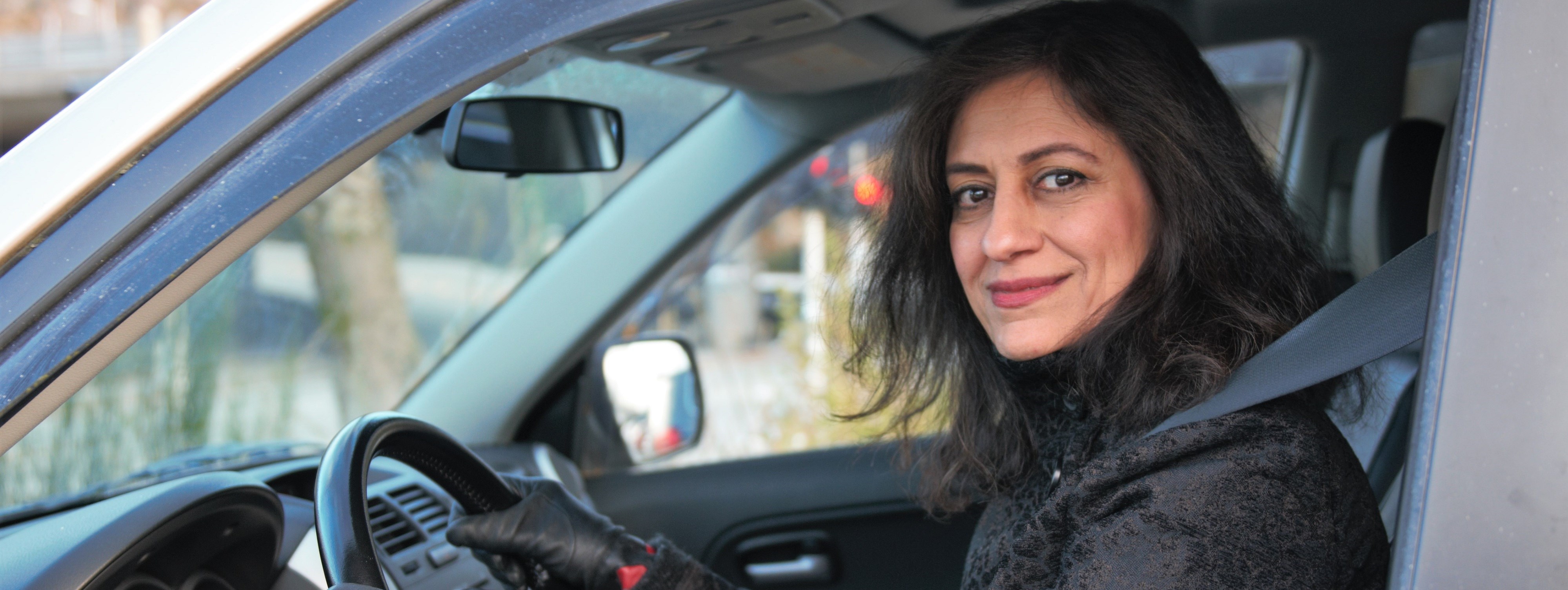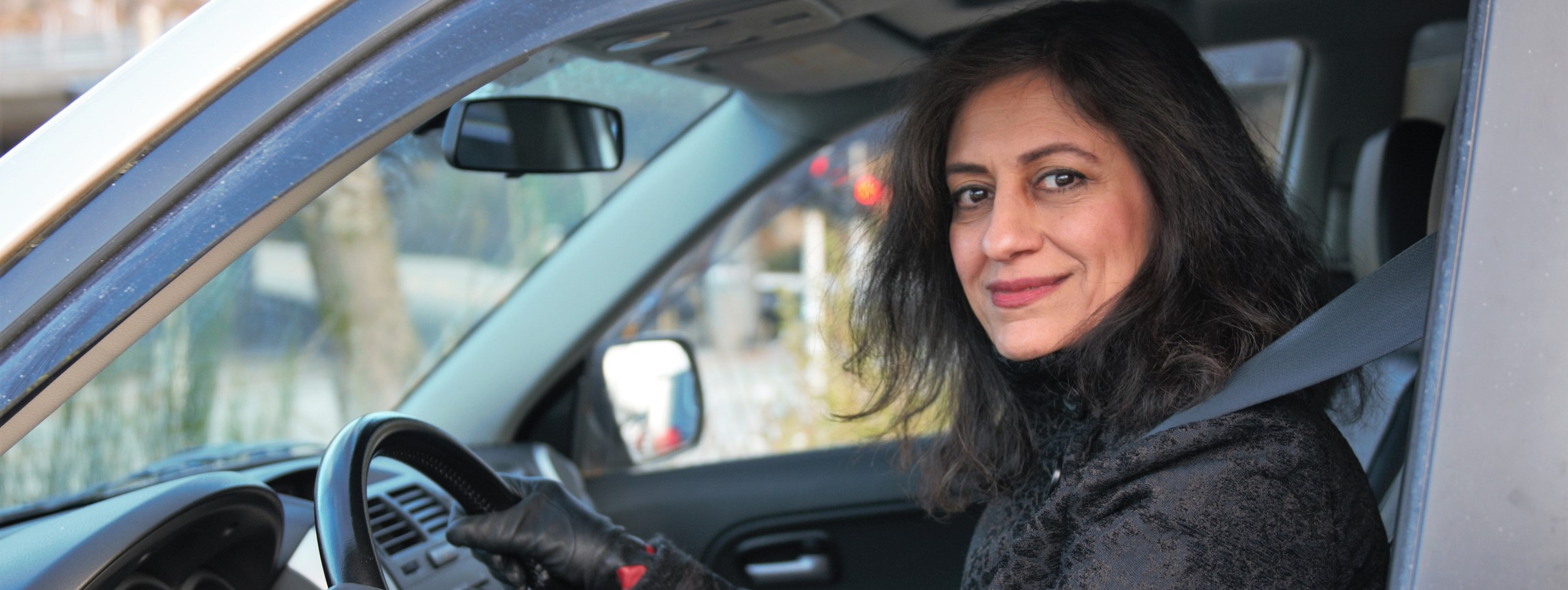Many believe that putting a robot in control of vehicles will improve road safety. Self-driving vehicles can mean huge savings, both for individuals and for society at large.
SNF Researcher Afsaneh Bjorvatn

Most people believe themselves to be better than average drivers. But robot cars can be vastly superior. That could save both money and human lives.
Nearly all traffic accidents are caused by human error. Last year alone, more than 25,000 people were killed on Europe’s roads. Figures from the EU Commission show that an even higher number of people suffer permanent injuries.
Many believe that putting a robot in control of vehicles will improve road safety. Self-driving vehicles can mean huge savings, both for individuals and for society at large.
‘We are talking about reducing the number of accidents. This will reduce loss of human life, injuries and vehicle damage. Automated driving can also save time by improving traffic flow,’ says Afsaneh Bjorvatn.
Many believe that putting a robot in control of vehicles will improve road safety. Self-driving vehicles can mean huge savings, both for individuals and for society at large.
SNF Researcher Afsaneh Bjorvatn
On the other hand, technical failure can cause accidents, and when more people can use cars and fewer use public transport, car density will increase, and both risk and pollution will increase with it.
So far, these are hypotheses that SNF researcher Bjorvatn has been working hard on since SNF became involved in the EU project Piloting Automated Driving on European Roads (L3Pilot).
‘This is the world’s most extensive study of automated driving,’ says Bjorvatn, who is project manager.
Professor emeritus Kåre Petter Hagen and Associate Professor Karl Rolf Pedersen are working with her on the project. Former head of SNF Per Heum acts as an adviser in the SNF project.
The European pilot study has a price tag of nearly NOK 700 million. Twelve of the world's biggest car manufacturers are behind the study. Most of them are European companies, plus Honda and Toyota from Asia.
Several universities, research environments, insurance companies and user organisations are important partners.
SNF will conduct the socio-economic analysis of automated driving in Europe, which is the only Norwegian contribution to the pilot study.
‘The first thing we have to do is to develop relevant research questions and define the indicators that we need for our analysis. It's a challenging task, because we have to address automated driving in individual countries with different weather conditions and traffic cultures, while the analysis must be harmonised to apply to the EU as a whole across national borders’. Bjorvatn says.
The actual driving will take place on ordinary roads both in cities and towns and in rural areas. The testing will be conducted by 1,000 drivers, driving 100 different cars. This will not take place in Norway, but in 11 other European countries.

‘The socio-economic analysis will be conducted at the very end, and it will be based on data from the pilot driving, among other things. All the cars will be equipped with cameras and different measuring instruments to register everything from the driver’s eye, hand and foot movements when they drive, park or brake to what happens in the event of an accident. These data will be interpreted and then used in the socio-economic analysis. In addition, other parties will work on a technical assessment and a user assessment.’
These elements are also included in the SNF analysis. Other data are provided by different research partners and road authorities involved in the project, and they are also collecting data themselves.
There are different levels of automated driving:
• Level 0, which describes most cars today. No automation.
• Level 1 has cruise control and a braking function. Some cars have these functions.
• Level 2 has cruise control, braking function, a rear parking camera, and keeps the car in the lane. Some cars have these functions. These cars cannot park themselves.
• Level 3 has all level 2 functions, plus a parking function. These cars can park themselves. In addition, the car can change lanes and overtake other vehicles. The driver can let go of the wheel while driving.
• Level 4 means that the robot does most of the driving.
• Level 5 means completely driverless cars.
‘The pilot study is at level 3. We will also be looking at level 4, but that will only be tested on the test track and not in ordinary traffic. At level 3, the car can drive itself, but the driver must be prepared to take the wheel if anything should happen and the car signals that you should do so. If a dangerous situation arises, the car will notify the driver by light and sound signals.’
‘So you can sit and read the newspaper while the car is driving?’
‘No, if you hold the newspaper in front of your face, the camera cannot detect the driver's eye movements. Checking your e-mail or watching a video are better options, but you nevertheless need to be alert. At level 4, you can just relax and read the newspaper.’
‘Or even sleep?’
‘I wouldn’t recommend it. It is possible at level 4, because the car will take full control on its own if the driver doesn’t respond to a notification. Level 5 cars are completely driverless. The car just drives. The driver doesn't have to do anything at all. That is a long way off.’
It is expected that about one per cent of all cars will be at level 3 by 2025. That is considered the most likely scenario. By 2035, 35 per cent will be automated to some extent. This will become a reality in the years ahead.
People who are unable to use a car today, such as people with various handicaps, or elderly people who will today have their driving licence revoked on health grounds, can travel by car in future without being dependent on other people.
‘But that will mean more cars on the roads?’
‘Yes, that is a possibility, and possibly something we could look into.’
‘Many are discussing the potential consequences for different occupations and industries. Bus drivers, driver’s education and the transport industry. Will these occupations disappear?’
If a dangerous situation arises, the car will notify the driver by light and sound signals.
SNF Researcher Afsaneh Bjorvatn
‘In the long term, there will be certain consequences for several industries. At the same time, new job opportunities may be created, for example in the monitoring of driverless buses and remote controlling them to avoid accidents if the system fails.’
‘Can we envisage children using automated cars?’
‘It’s still too early to tell. Legislation needs to be put in place before the completely driverless cars are released. There are also many ethical issues involved. What happens if the communication between a car and a satellite fails? Who would be responsible – the car owner or the manufacturer?’
The overriding goal of the L3 pilot study is to test whether automated driving is a safe and efficient means of transport. This autumn, all the partners met for a kick-off meeting in Volkswagen's home city of Wolfsburg.
‘I was given the opportunity to test an automated car on the German roads. That was an interesting experience, but it took a while before I dared to let go of the wheel. I felt that I had to keep an eye on things,’ says Bjorvatn.
In late November, the Norwegian Parliament's Standing Committee on Transport and Communications considered the proposed ‘Act relating to testing of self-driving vehicles’, a bill submitted by the Ministry of Transport and Communications.
‘The means of transport of the future will make everyday life easier for most people. There is no doubt that we are facing a revolution in terms of public transport. We have already seen limited testing of self-driving minibuses in several locations in Norway. We have now submitted a bill that will make it possible to try out self-driving vehicles,’ said Minister of Transport and Communications Ketil Solvik-Olsen in a press release in November.